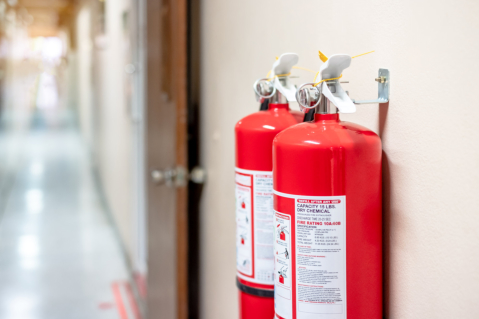
Fire incidents can be prevented. That is the good news that is also easily overlooked especially when we don’t supply our home or office with fire safety measures. A simple fire extinguisher is already an effective tool to defend our homes and locations from unwanted fire.
Our Emergency Preparedness Consultants in Washington, DC are advocates for all emergency and calamity safety measures. So when you feel very unprepared about your place, feel free to consult with them. These consultants can enlighten you with relevant information on how to secure your home from fire. They will also empower you in being disaster-ready.
Because of what we do as Emergency Training Consultants in Washington, DC, we encourage you to be ready for fire emergencies. Equip your place with fire extinguishers. Here is something to guide you in selecting the exact type of fire extinguisher to use.
There are different types of extinguishers, and these include the following:
- Water Extinguisher
This type of extinguisher is considered as Class A rating or Label A. It is able to extinguish fires on ordinary combustible materials. Common examples of ordinary combustible items include paper, wood, clothes, rubber, and most kinds of plastics.
- Flammable Liquid Extinguisher
The flammable liquid extinguisher is the one with a Class B rating or Label B. It can douse fires that come from flammable liquids such as oils, gasoline, and paints. It is specially designed to kill these kinds of flames as water can react in a riskier manner.
- Electrical Extinguisher
For fires occurring in wiring, computers, or other electronic devices, you need to use this class or label C extinguisher.
- Multi-purpose Extinguisher
This is the type of fire extinguisher that can douse the fire from labels A, B, and C.
- Metal Extinguisher
Some metal flakes can also trigger fires. For these kinds of incidents, the class D fire extinguisher should be the one to use. It can douse off the fire that can hit metals including magnesium, sodium, titanium, and potassium.
- Cooking Fluid Extinguisher
This particular type of fire extinguisher is highly preferred in the kitchen area. It contains special elements that can douse fires caused by cooking fluids such as oils and fatty substances.
If you’re going to equip your home with fire safety equipment such as extinguishers, ensure that you are getting the right class.
Furthermore, remember the word PASS when operating a fire extinguisher.
- P – You need to PULL the pin first so the seal will be broken.
- A – You have to AIM the hose or nozzle of the extinguisher at the base of the fire.
- S – Once aimed, SQUEEZE the extinguisher’s handle so the contents are released.
- S – SWEEP the hose from one side to the other until the fire is contained.
We provide Disaster and Risk Management Trainings at Strategic Educational Consulting, LLC. We have more fire safety measures to share in these training programs. Prepare your family, company, and staff. Get the fire safety training today.
Book your training schedule by contacting us.


